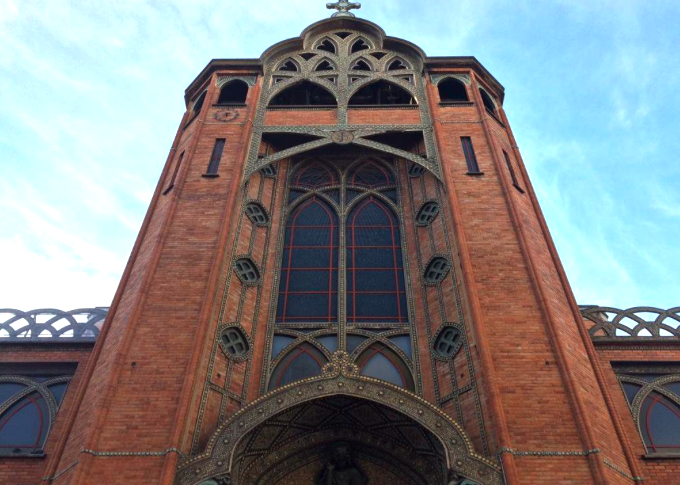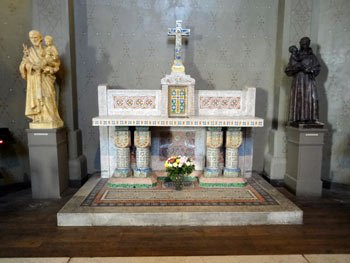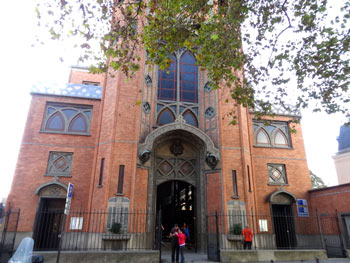The Place des Abbesses is a place like no other in Paris. That is for that matter maybe the reason for it being the tourist centre of Montmartre, around which you will find lots of cultural and artistic curiosities. Let’s for instance name the “Wall of Love” (dedicated to all lovers worldwide), the entry to the subway station Abbesses (the last subway station with Paris’ glass canopy, made by Guimard), or again the Saint-Jean de Montmartre Church, one of the few Parisian churches in Art Nouveau style.
The Saint-Jean de Montmartre Church, achieved in 1904, is the work of Anatole de Baudot, who was the first architect to propose to build a religious building out of concrete. You will therefore find concrete mostly inside the building, whereas the outside is an imposing brick construction. As it is a sacred building, the church is exempted (on the outside at least) from the usual fantasies of the Art Nouveau, and stays in a certain way consistent with the antique models, bound above all to a conventional architecture respecting first of all symmetries, and a certain sobriety.
The only parts contrasting with the traditional character of the building are the central porch embellished with sculptures and the strange ornamentation on the façade made with multicoloured sandstone pearls, which remind us the taste of the Art Nouveau for all kinds of oddities. And don’t forget that finding a church made of bricks and reinforced concrete isn’t that common in Paris!
Inside the church, you will find an original decoration, which makes Saint-Jean de Montmartre, besides its peculiar layout made with reinforced concrete arches, an interesting place to visit. Take a look at the beautiful main altar, designed and decorated by Pierre Roche and Alexandre Bigot, latter one being the ceramist who also decorated the façade of the sumptuous Lavirotte building, in the 7th arrondissement. As for the glazier and the murals, which are quite traditional, they are not the most remarkable ones inside a religious building in Paris, but they are still of very good quality.
You should also know that the construction history of this monument is pretty turbulent, since the works had to be interrupted because of a trial for non-compliance, which most certainly also hid a certain scepticism of the religious authorities concerning the reinforced concrete… The works were picked up in 1902, after its demolition, amongst others, had been stopped. It is an original monument it would have been sad to see disappear!



